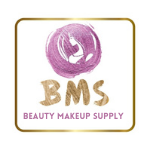Introduction:
As a small business owner in the beauty industry, you understand the importance of packaging. Not only does it protect your products, but it also serves as a powerful marketing tool, communicating your brand identity and values to potential customers. However, navigating the world of beauty packaging can be overwhelming, especially when you're just starting out. In this guide, we'll walk you through the essential steps to shop for beauty packaging effectively, helping you make informed decisions that align with your brand vision and budget.
1. Define Your Brand Identity:
Before you start browsing for packaging options, take some time to define your brand identity. What values do you want your packaging to communicate? Are you aiming for a luxurious, minimalist, eco-friendly, or playful aesthetic? Understanding your brand identity will guide your choices and ensure consistency across all your packaging materials.
2. Consider Product Requirements:
Different beauty products have unique packaging needs. For example, creams and lotions may require airless pumps to preserve their efficacy, while lipsticks need sturdy tubes to prevent breakage. Make a list of your product requirements, including size, shape, material, and any special features like UV protection or tamper-evident seals.
3. Research Suppliers:
Once you have a clear idea of your packaging needs, start researching suppliers. Look for reputable companies that specialize in beauty packaging and have a track record of delivering high-quality products. Consider factors such as pricing, minimum order quantities, lead times, and customization options. Don't hesitate to reach out to multiple suppliers to compare quotes and samples.
4. Evaluate Materials:
The choice of materials can significantly impact the look, feel, and sustainability of your packaging. Common options for beauty packaging include glass, plastic, metal, and sustainable alternatives like bioplastics or recycled materials. Evaluate the pros and cons of each material in terms of aesthetics, durability, environmental impact, and cost.
5. Test Samples:
Before committing to a large order, always request samples from your chosen suppliers. This allows you to assess the quality, functionality, and compatibility of the packaging with your products. Pay attention to details such as closure mechanisms, printing quality, and overall feel. If possible, conduct consumer testing to gather feedback on the packaging from your target audience.
6. Factor in Branding:
Your packaging is an extension of your brand, so don't overlook the importance of branding elements such as logos, colors, and typography. Work with your supplier to incorporate these elements seamlessly into your packaging design. Whether you opt for custom printing, labels, or embossing, ensure that your branding is consistent and memorable.
7. Calculate Costs:
Budget constraints are a reality for small businesses, so it's essential to calculate the total costs of your packaging project accurately. Consider not only the unit cost of the packaging itself but also any additional expenses such as design fees, shipping, and storage. Balance your budgetary constraints with the quality and functionality of the packaging to find the best value for your money.
8. Plan for Sustainability:
In today's eco-conscious market, sustainability is no longer just a trend—it's a necessity. Choose packaging materials and suppliers that prioritize sustainability and offer options such as recyclable, compostable, or reusable packaging. Communicate your commitment to sustainability transparently to resonate with environmentally conscious consumers.
Conclusion:
Shopping for beauty packaging for your small business requires careful consideration and planning. By defining your brand identity, understanding your product requirements, researching suppliers, evaluating materials, testing samples, incorporating branding, calculating costs, and prioritizing sustainability, you can find packaging solutions that align with your brand vision, budget, and values. With the right packaging, you can enhance the perceived value of your products and create a memorable brand experience for your customers.

